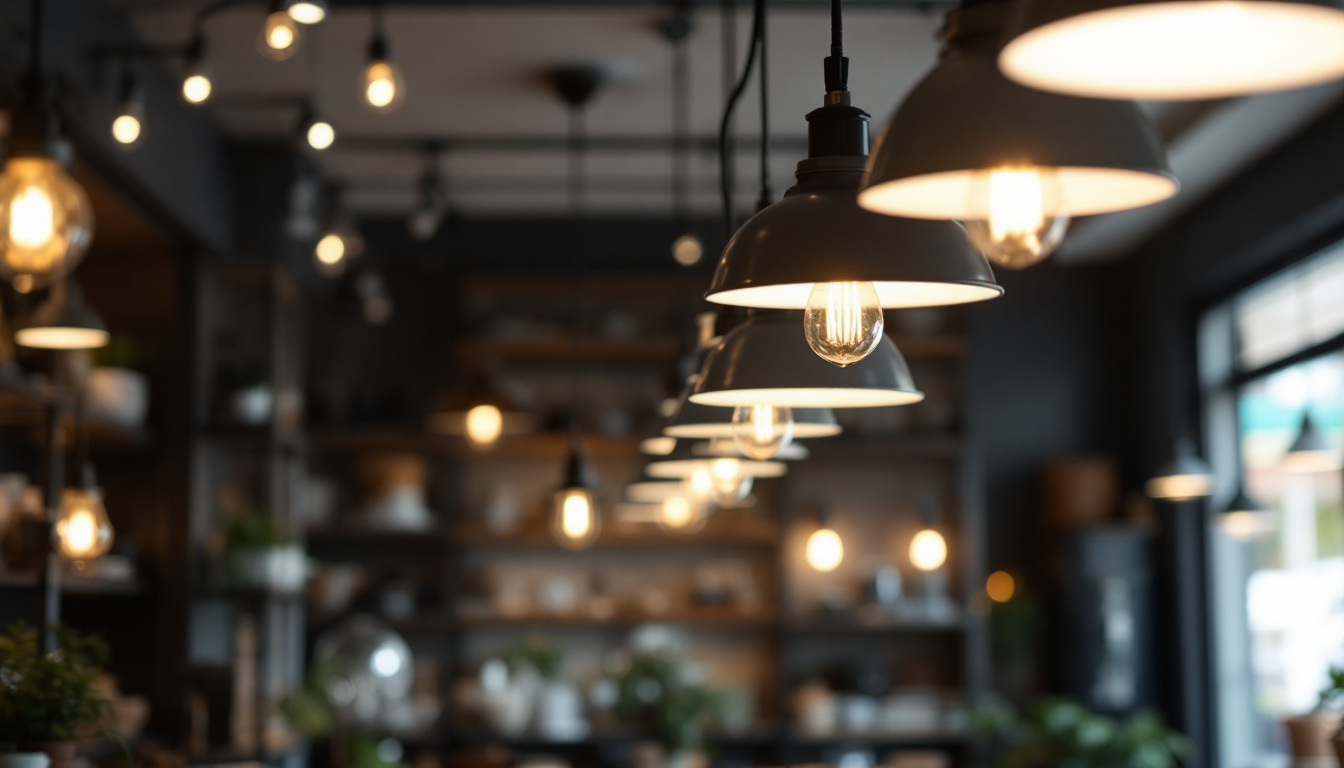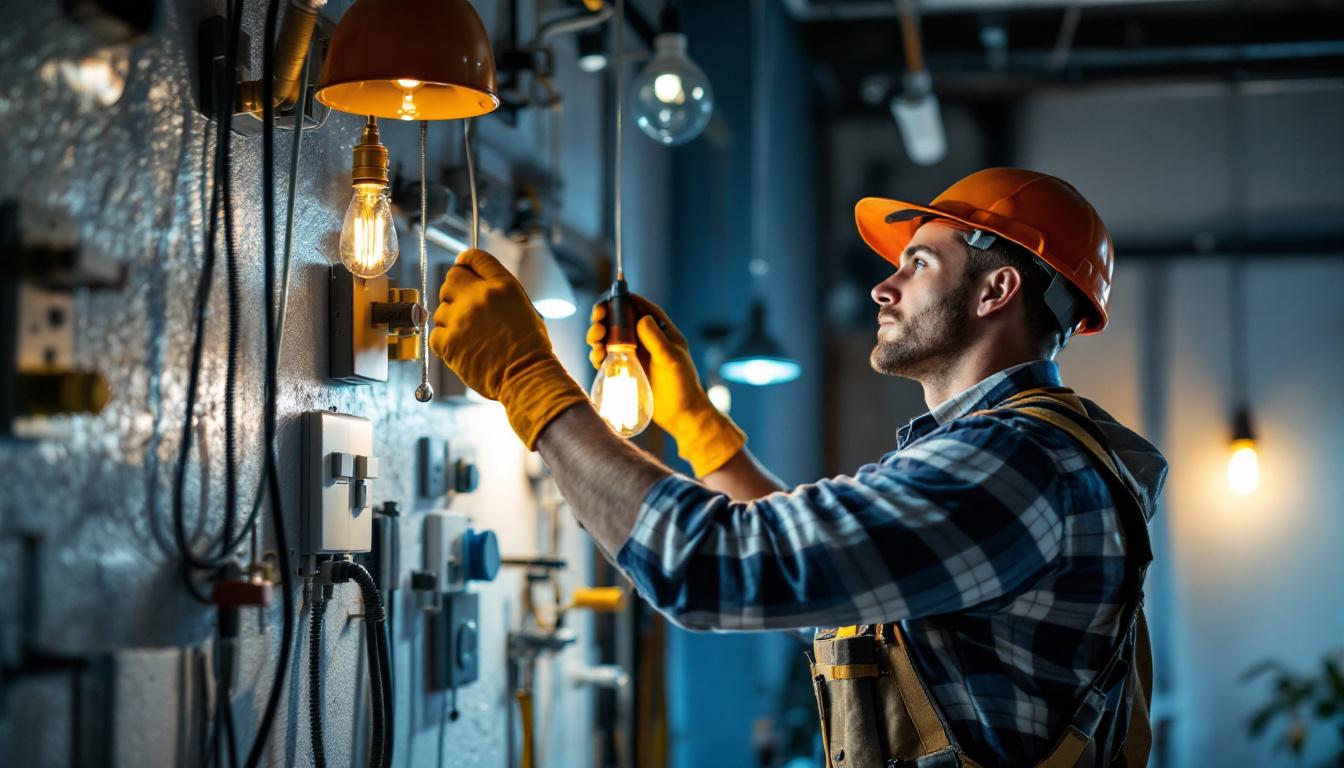
In the ever-evolving world of lighting solutions, LED technology has emerged as a game-changer, particularly for recessed lighting applications. Lighting contractors are increasingly recognizing the advantages of incorporating LED lights into their projects, not just for energy efficiency, but also for their versatility and aesthetic appeal. This article delves into the benefits of LED lights as a replacement for traditional recessed lighting, providing contractors with insights to maintain a competitive edge in the market.
LED (Light Emitting Diode) technology has transformed the lighting industry over the past few years. Initially regarded as a niche option, LEDs have now become the standard for many applications. Their ability to produce bright, high-quality light while consuming significantly less energy than incandescent or fluorescent bulbs has made them a preferred choice for both residential and commercial settings.
Moreover, advancements in LED technology have led to improved color rendering, dimming capabilities, and a broader range of styles and designs. This evolution allows lighting contractors to offer clients more options that meet their specific needs and preferences. For instance, with the introduction of smart LED systems, users can now control lighting remotely, adjust brightness, and even change colors to create the perfect ambiance for any occasion. This level of customization not only enhances the user experience but also opens up new avenues for contractors to showcase their expertise in modern lighting solutions.
One of the most compelling reasons for switching to LED lights is their energy efficiency. LEDs consume up to 80% less energy than traditional incandescent bulbs, which translates to lower electricity bills for clients. For lighting contractors, this aspect can be a strong selling point, as it aligns with the growing demand for sustainable solutions.
Additionally, the longevity of LED lights—often exceeding 25,000 hours—means reduced maintenance and replacement costs. This durability not only benefits clients but also allows contractors to build a reputation for providing reliable, long-lasting solutions. Furthermore, as energy costs continue to rise, the financial benefits of switching to LED lighting become increasingly apparent, making it an attractive option for budget-conscious clients. The initial investment in LED technology is often recouped quickly through energy savings, further solidifying the contractor’s position as a provider of cost-effective and environmentally friendly lighting options. In a world that is progressively leaning towards sustainability, offering LED solutions can significantly enhance a contractor’s marketability and client satisfaction.
Replacing traditional recessed lighting with LED options offers numerous advantages that can enhance both the functionality and aesthetic appeal of a space. Understanding these benefits can empower lighting contractors to make informed recommendations to their clients.
LED lights come in various shapes, sizes, and color temperatures, allowing for greater flexibility in design. Whether a client desires a warm ambiance for a cozy living room or a bright, cool light for a modern office, LED options can cater to these preferences. This versatility enables contractors to create customized lighting solutions that enhance the overall look and feel of a space.
Furthermore, the slim profile of many LED recessed fixtures allows for seamless integration into ceilings, providing a sleek and contemporary appearance. This aesthetic appeal can be a significant draw for clients looking to modernize their interiors. Additionally, the ability to dim LED lights can further enhance the ambiance, allowing users to adjust the brightness according to the time of day or the mood they wish to create. This feature is particularly beneficial in dining areas or home theaters, where lighting plays a crucial role in the overall experience.
LED lights are known for their superior light quality, which is crucial for various applications. With a high Color Rendering Index (CRI), LEDs can accurately reproduce colors, making them ideal for spaces where color accuracy is essential, such as art galleries or retail environments.
Moreover, LEDs offer instant illumination without the warm-up time associated with some traditional lighting options. This immediate brightness can enhance the functionality of a space, particularly in areas where quick visibility is important, such as hallways or staircases. In addition to their quick response time, LEDs also produce less heat compared to incandescent bulbs, making them safer for prolonged use. This characteristic is especially advantageous in enclosed spaces or areas with limited ventilation, as it reduces the risk of overheating and potential fire hazards. Furthermore, the longevity of LED lights, which can last up to 25,000 hours or more, means less frequent replacements, leading to lower maintenance costs and less disruption in both residential and commercial settings.
As sustainability becomes a priority for many homeowners and businesses, lighting contractors have an opportunity to position themselves as leaders in eco-friendly solutions. LEDs are inherently more sustainable than traditional lighting options, contributing to a reduced carbon footprint.
By replacing recessed lighting with LED fixtures, contractors can help clients significantly reduce their energy consumption. This reduction not only lowers utility bills but also decreases the demand on power plants, contributing to a more sustainable energy grid.
In addition, many municipalities offer incentives for energy-efficient upgrades, which can further enhance the appeal of LED lighting. Contractors can leverage these incentives to provide clients with cost-effective solutions that align with their sustainability goals. Moreover, as energy-efficient technologies continue to evolve, the potential for future savings and innovations will only grow, making it an opportune time for clients to invest in sustainable lighting solutions.
LED lights have a longer lifespan compared to traditional bulbs, resulting in less waste over time. This longevity means fewer replacements and less frequent disposal of old lighting fixtures, which is beneficial for the environment. Lighting contractors can emphasize this aspect when discussing the benefits of LED lights with clients who are environmentally conscious.
Furthermore, many LED products are designed to be recyclable, further reducing their environmental impact. By choosing LED lighting, clients can contribute to a circular economy, making their lighting choices more sustainable. Additionally, the manufacturing process for LEDs typically involves fewer hazardous materials than traditional lighting options, which means that the overall environmental footprint is minimized from production to disposal. This holistic approach to sustainability not only appeals to eco-minded clients but also fosters a broader commitment to environmental stewardship within the community.
While the benefits of LED lights are compelling, lighting contractors should also be aware of the challenges and considerations associated with transitioning to LED technology. Understanding these factors can help contractors navigate the landscape more effectively.
One of the primary challenges contractors may face is the initial cost of LED fixtures, which can be higher than traditional options. However, it’s essential to communicate the long-term savings associated with energy efficiency and reduced maintenance costs to clients. Providing a comprehensive cost-benefit analysis can help clients see the value in investing in LED technology.
Additionally, contractors should stay informed about available rebates and incentives that can offset initial costs, making LED options more accessible to clients with budget constraints.
When replacing recessed lighting with LED fixtures, compatibility with existing systems is a crucial consideration. Some older dimmer switches and transformers may not work effectively with LED lights, leading to flickering or reduced performance. Contractors should educate themselves on the compatibility of various LED products with existing systems to avoid potential issues.
Offering clients a comprehensive assessment of their current lighting setup can help identify any necessary upgrades or modifications, ensuring a smooth transition to LED technology.
As lighting contractors consider incorporating LED lights into their offerings, effective marketing strategies play a vital role in communicating the benefits to potential clients. A well-crafted marketing approach can help contractors stand out in a competitive market.
Education is key when promoting the transition to LED lights. Contractors can create informative materials, such as brochures or online content, that outline the advantages of LED technology, including energy savings, improved aesthetics, and environmental benefits. Hosting workshops or webinars can also provide valuable insights to clients and position contractors as industry experts.
By fostering a knowledgeable client base, contractors can build trust and encourage more clients to make the switch to LED lighting solutions.
Highlighting successful projects that feature LED lighting can serve as powerful marketing tools. Before-and-after photos, case studies, and testimonials can effectively demonstrate the transformative impact of LED lights in various settings. Sharing these success stories on social media platforms and websites can attract potential clients and showcase the contractor’s expertise.
Additionally, participating in local home shows or industry events can provide opportunities to showcase LED lighting solutions and engage with potential clients face-to-face.
As the lighting industry continues to evolve, embracing LED technology is essential for lighting contractors seeking to remain competitive. The benefits of replacing recessed lighting with LED options are numerous, from energy efficiency and cost savings to enhanced aesthetics and sustainability.
By understanding the advantages and challenges associated with LED lights, contractors can position themselves as leaders in the market, offering clients innovative solutions that meet their needs. With effective marketing strategies and a commitment to education, lighting contractors can successfully navigate the transition to LED technology, ensuring a bright future for their businesses and their clients.
Ready to elevate your lighting projects and outshine the competition? At LumenWholesale, we provide lighting contractors with the cutting-edge LED solutions you need to stay ahead. Our spec-grade lighting products combine quality and affordability, ensuring you deliver exceptional value to your clients. Say goodbye to middleman markups and hello to unbeatable wholesale prices, complemented by the convenience of free shipping on bulk orders. Don’t compromise on cost or quality—choose LumenWholesale for your lighting needs and experience the best in service and selection. Start transforming your lighting projects today by visiting Wholesale Lighting at the Best Value.

Discover how outdoor path lights powered by solar energy can enhance safety and aesthetics in your outdoor spaces.

Illuminate your projects with expert insights! Discover essential tips and innovative strategies for lighting contractors to enhance shop environments, boost efficiency, and create captivating displays..

Discover effective strategies and innovative techniques for lighting contractors in this comprehensive guide.

Discover how mastering electrical receptacles can give you the competitive edge in securing more lighting contracts.